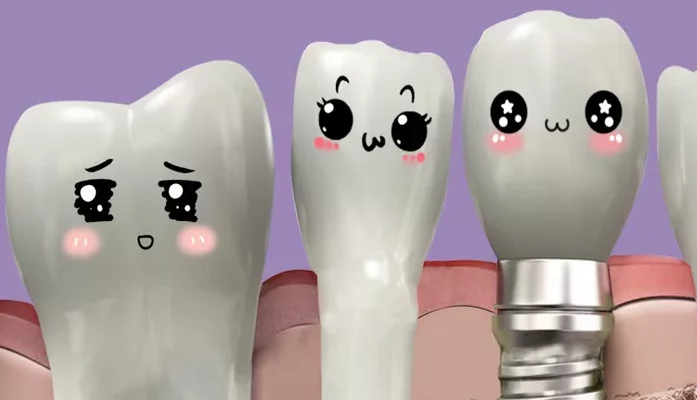Dental implants have become a popular and effective way to replace missing teeth. They are artificial tooth roots that are surgically placed into the jawbone to support a replacement tooth or bridge. However, one potential issue that can arise during and after the implant procedure is the presence of dry grooves. Dry grooves are areas on the implant surface that lack soft tissue coverage, exposing the implant to potential complications such as infection and inflammation. Proper care and maintenance of these dry grooves are crucial for the long-term success of dental implants. This article will provide a detailed guide on how to care for dry grooves when dental implants are installed.
Understanding Dry Grooves
Dry grooves are areas on the surface of a dental implant that are not covered by soft tissue, such as gum tissue. These grooves can be caused by various factors, including surgical technique, healing processes, and the patient’s individual oral health conditions. The absence of soft tissue coverage can leave the implant surface exposed to the oral environment, making it susceptible to bacteria, plaque accumulation, and inflammation.
Why Dry Grooves Are Important
Proper care of dry grooves is critical for several reasons. Firstly, dry grooves can harbor bacteria and plaque, leading to infection and inflammation around the implant site. This can compromise the stability and integration of the implant into the jawbone. Secondly, exposed implant surfaces can cause discomfort and sensitivity to the patient. Finally, poor care of dry grooves can result in implant failure, requiring costly and invasive revision surgeries.
Preventive Measures
Proper Surgical Technique
The surgical technique used during implant placement can influence the development of dry grooves. Surgeons should aim for minimal trauma to the surrounding tissues and use techniques that promote healing and soft tissue coverage. This may include the use of sutures, soft tissue grafts, or other regenerative procedures to ensure adequate tissue coverage around the implant.
Post-Operative Care
After the implant procedure, patients must adhere to a strict post-operative care plan. This includes maintaining good oral hygiene, avoiding hard and sticky foods, and taking any prescribed medications. Patients should also avoid smoking and excessive alcohol consumption, as these habits can impair healing and increase the risk of infection.
Professional Follow-Up
Regular follow-up visits with the dentist or oral surgeon are essential for monitoring the healing process and addressing any potential complications. During these visits, the dentist will assess the implant site for signs of infection, inflammation, or tissue recession. They may also recommend additional treatments or procedures to improve tissue coverage and reduce the risk of dry grooves.
Management of Dry Grooves
If dry grooves develop despite preventive measures, several management options are available to address the issue.
Soft Tissue Grafting
Soft tissue grafting is a common procedure used to cover exposed implant surfaces. The graft material can be sourced from the patient’s own tissue (autograft) or from a donor (allograft). The graft is placed over the exposed area and sutured into place to promote healing and tissue regeneration. This procedure can be performed under local anesthesia and typically requires a few weeks of healing before the final restoration can be placed.
Laser Therapy
Laser therapy is another option for treating dry grooves. Lasers can be used to stimulate tissue growth and healing, promote blood flow, and reduce inflammation. This treatment is relatively non-invasive and can be performed in the dentist’s office. However, it may require multiple sessions to achieve the desired results.
Topical Medications
Topical medications, such as gels, ointments, or rinses, can be used to promote healing and reduce inflammation around the implant site. These medications may contain antibiotics, anti-inflammatories, or growth factors that can help improve tissue health and coverage.
Implant Redesign
In some cases, the design of the implant itself may contribute to the development of dry grooves. If this is suspected, the implant may need to be redesigned or replaced with a different type of implant that is less likely to cause tissue recession.
Patient Education and Compliance
Patient education and compliance are key factors in managing dry grooves. Patients should be informed about the potential risks and complications associated with dental implants, as well as the importance of good oral hygiene and regular dental visits. They should be taught proper brushing and flossing techniques to ensure that the implant site remains clean and free of plaque and bacteria.
Additionally, patients should be encouraged to report any signs of discomfort, inflammation, or infection around the implant site promptly. Early detection and treatment of these issues can help prevent more serious complications and ensure the long-term success of the implant.
Conclusion
Dry grooves are a potential complication of dental implant procedures that can compromise the stability and success of the implant. Proper care and management of these grooves are crucial for ensuring the long-term health and function of the implant. Preventive measures, such as proper surgical technique, post-operative care, and professional follow-up, can help reduce the risk of dry grooves. If they develop, management options such as soft tissue grafting, laser therapy, topical medications, and implant redesign can be used to address the issue.In summary, dental implants are a valuable tool for replacing missing teeth, but they require careful management to avoid complications such as dry grooves. By following the recommendations outlined in this article, patients and dental professionals can work together to ensure the long-term success of dental implants and maintain optimal oral health.
Related topics:

